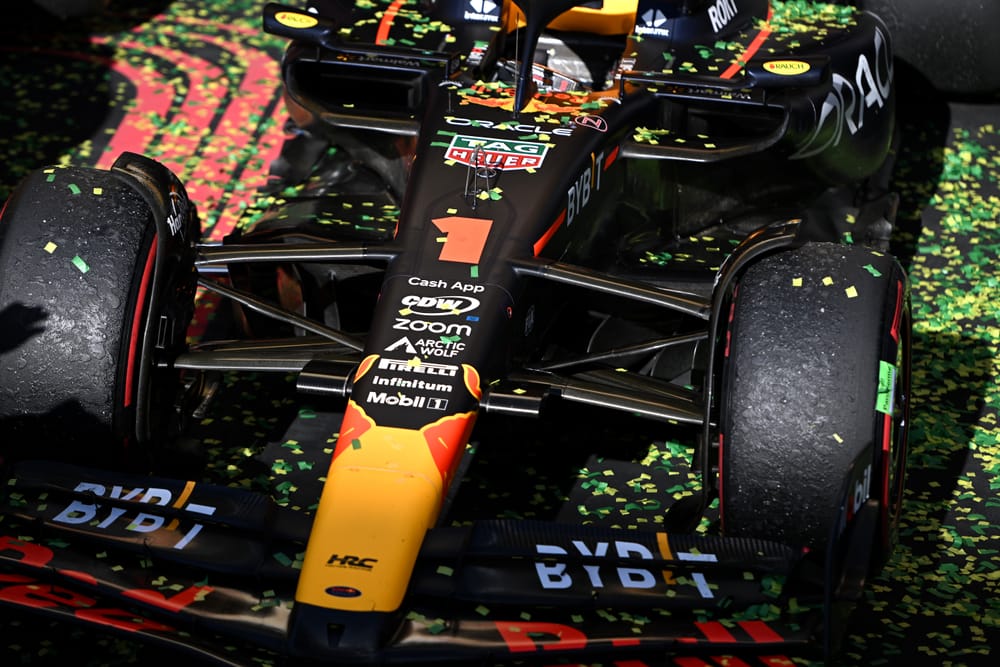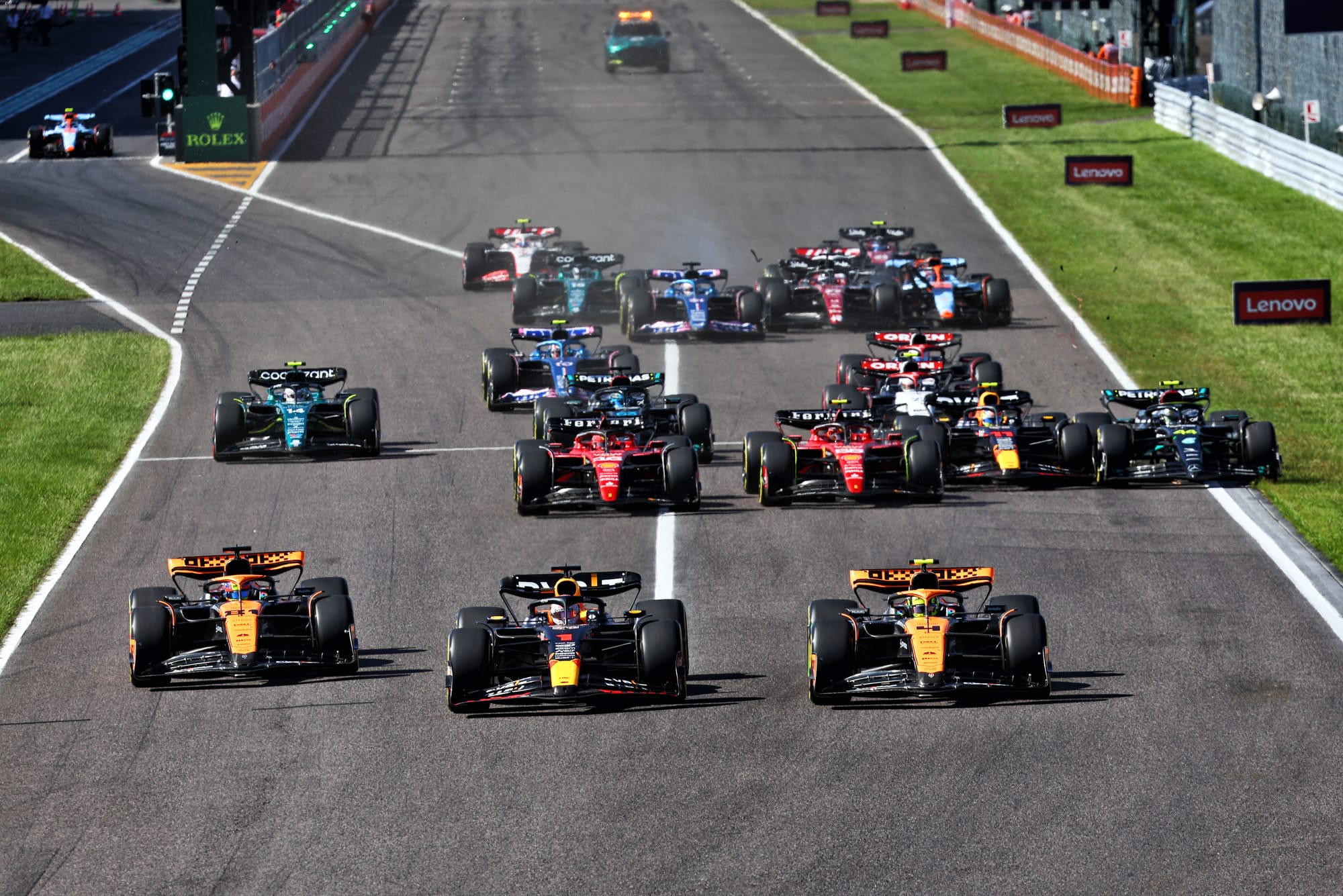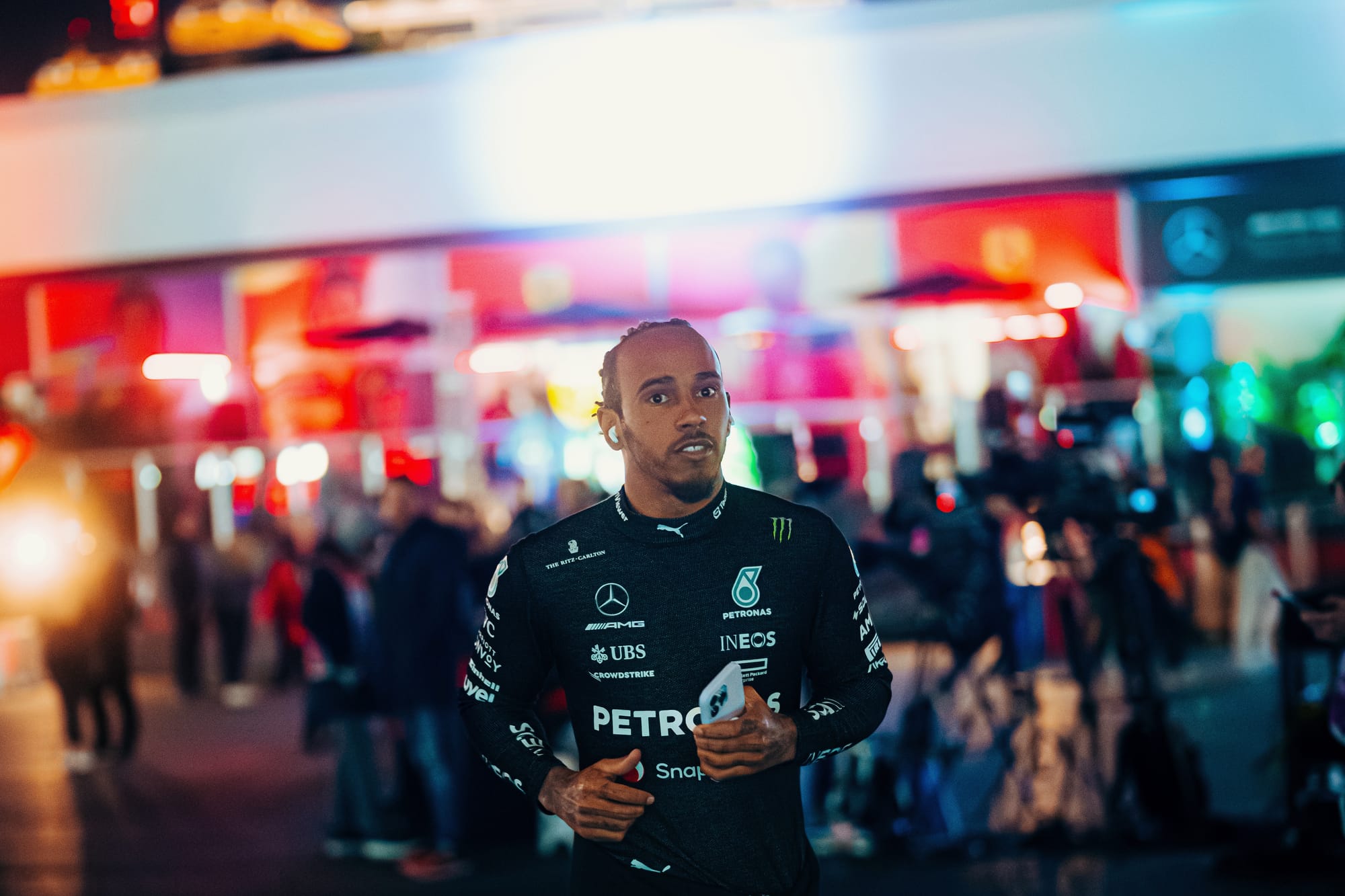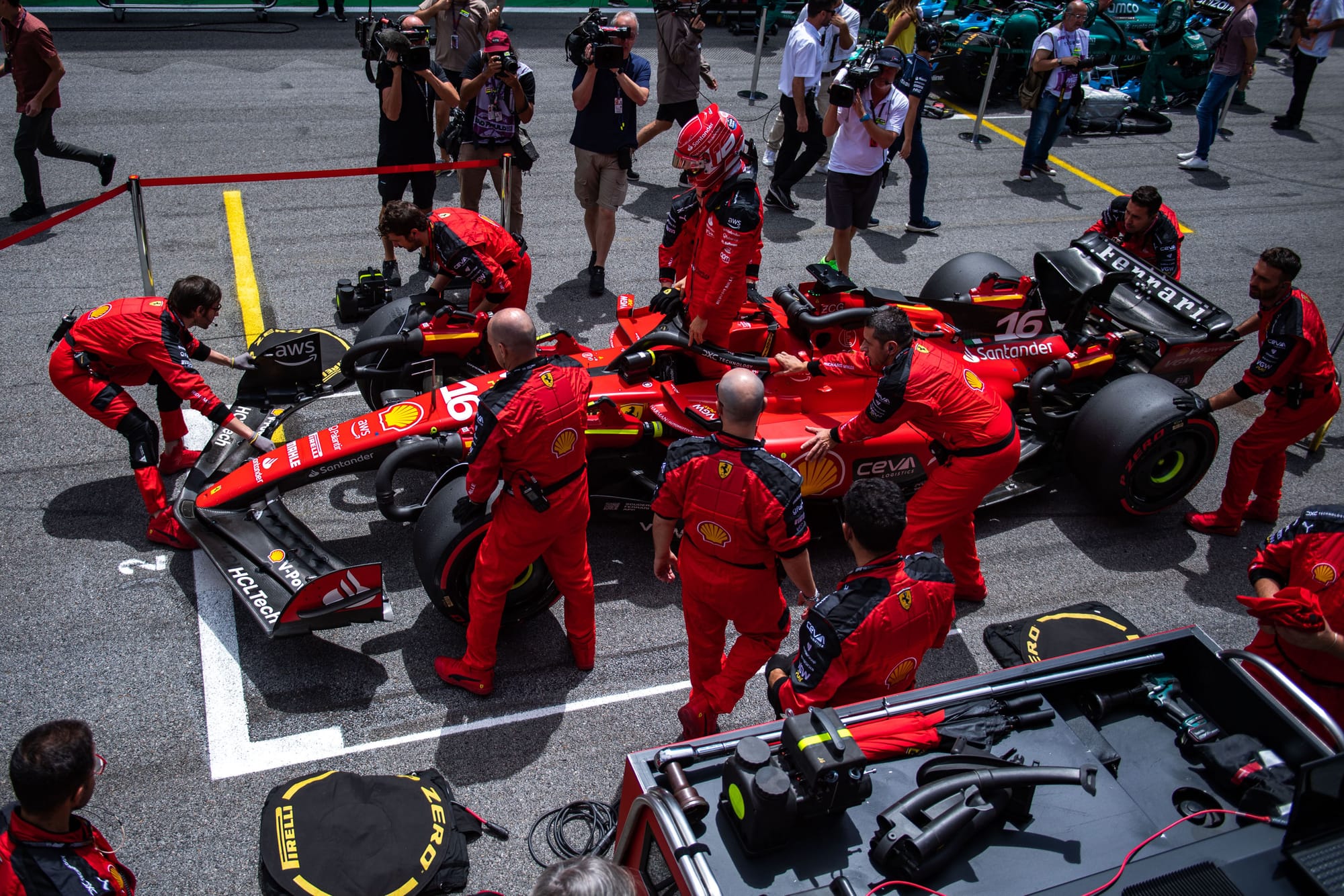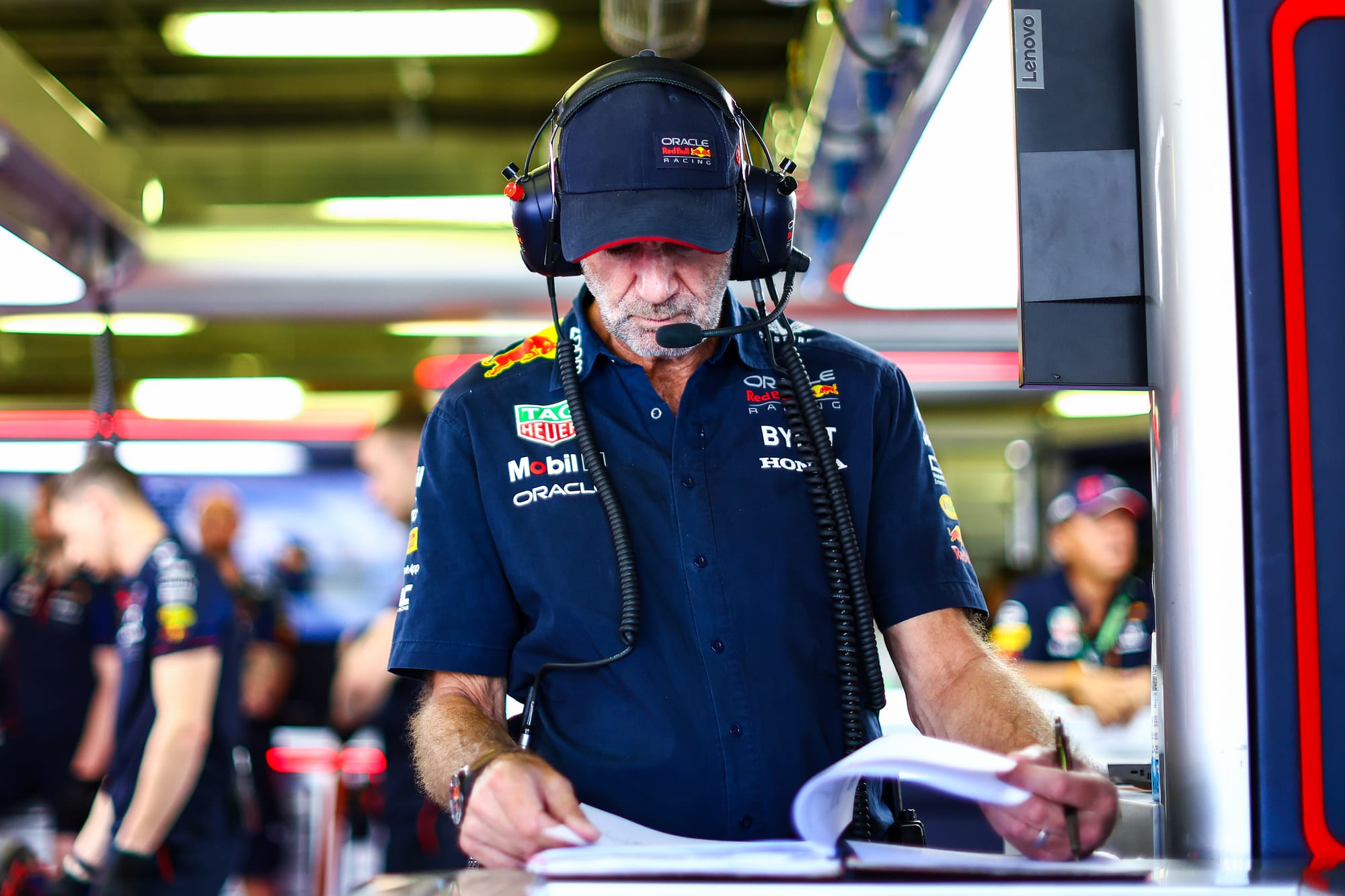Up Next

There’s 10 Formula 1 teams all hoping that 2024 will bring them everything they wished for over the Christmas period. It’s now time to button up the loose ends on your new car design and get it ready for the one and only pre-season test in Bahrain on February 21-23.
One week later, it’s race time - so the outcome of that test and the first race weekend will be confirmation of who has improved, who has stood still and who has, unfortunately, gone backwards.

When your new car breaks cover, it’s a bit like Christmas Day. You really want something special and exciting and the last thing you need is another pair of socks. But unlike the mystery of Christmas presents, as a technical director you will have followed the progress of your car daily. Eddie Jordan always - well, mostly - used to say to me when the car sat on the ground for the first time that I must be pleased with how it looks. I would reply, ‘Eddie I have been looking at it growing up for the last six months’.
What you see is what I call a ‘visual concept’, meaning how the body surfaces set up the airflow structures around the car. Less obvious, but just as important, are the internal surfaces. But in the real world, all of this has very little to do with how the car actually functions. Instead, that’s down to the performance specification that should have been set months ago. The airflow structure is critical to deliver that performance specification through the transient states the car has to cope with.
Other than probably 100 meters at the end of each long straight when you want minimum drag, the car will always be on the move. Decelerating generates pitch, turning into a corner with steering lock applied creates yaw, which is simply a four-wheel slide, and squatting from accelerating at the exit of the corner.
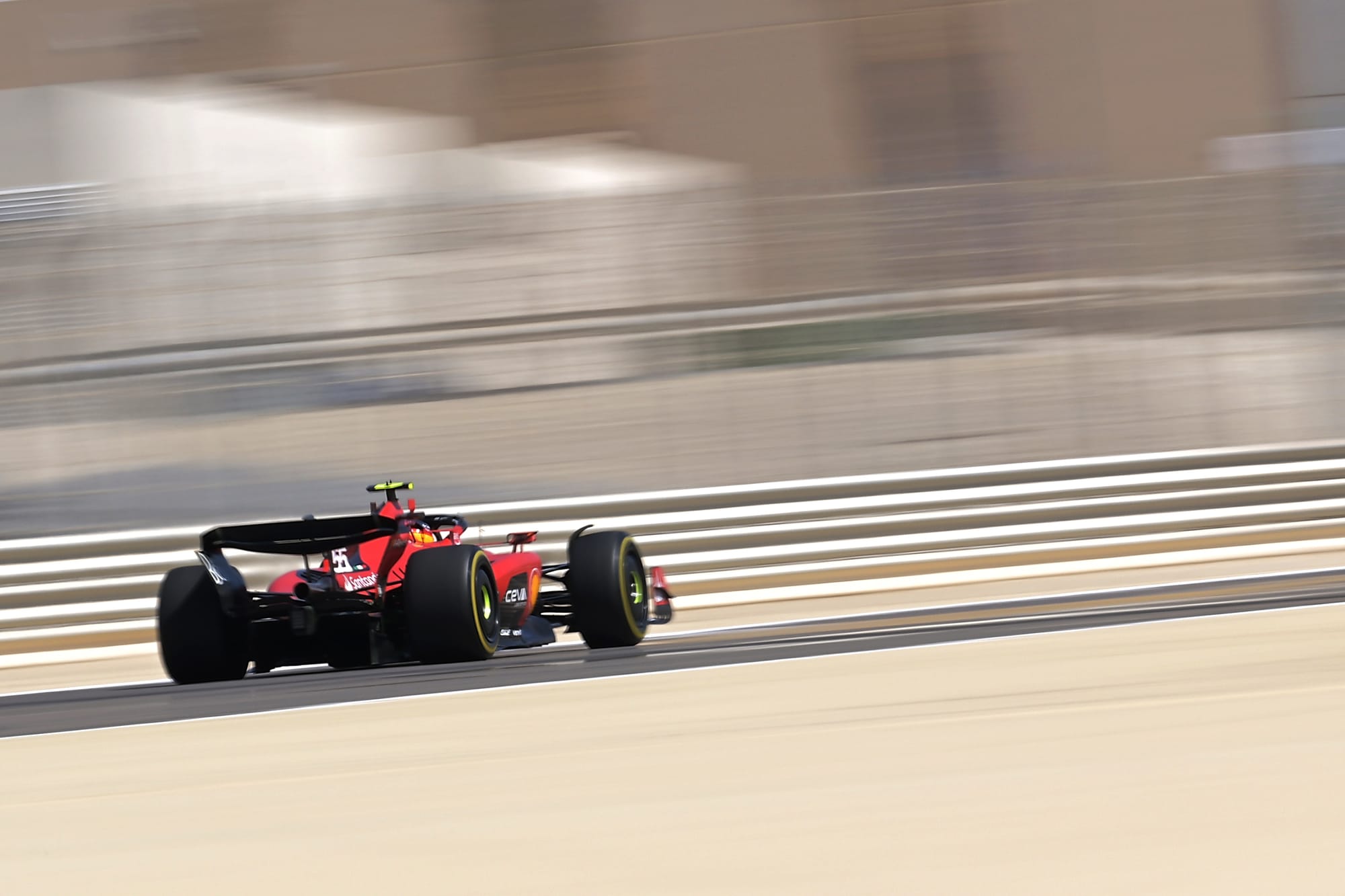
These are the conditions that must offer the driver stability, and as such generate confidence so that they will push a little harder next time to find out the true limits of the car. If it isn’t consistent and it bites them, they will stay away from those limits and that will show up on the stopwatch.
It’s relatively easy to come up with a performance profile that gives fantastic numbers in a straight line, or at a certain ride height, but much more difficult when you must cater for an aerodynamic projectile that is in a transient condition for 99% of a lap.
As the research and development has progressed over the winter, that performance specification will have been modified continually so that when the car hits the track the teams know what to expect from it. That is then your start point for what is going to be a long and tough season.
As the head aerodynamicist, chief designer, or head of vehicle dynamics, your challenge is to manage your group of people to achieve the objectives set out by the technical director when they create that performance specification. It should never be straightforward and you should always be chasing that last little bit. If it’s too easy, the specification was not demanding enough so it’s always a fine line between achievement and underachievement.
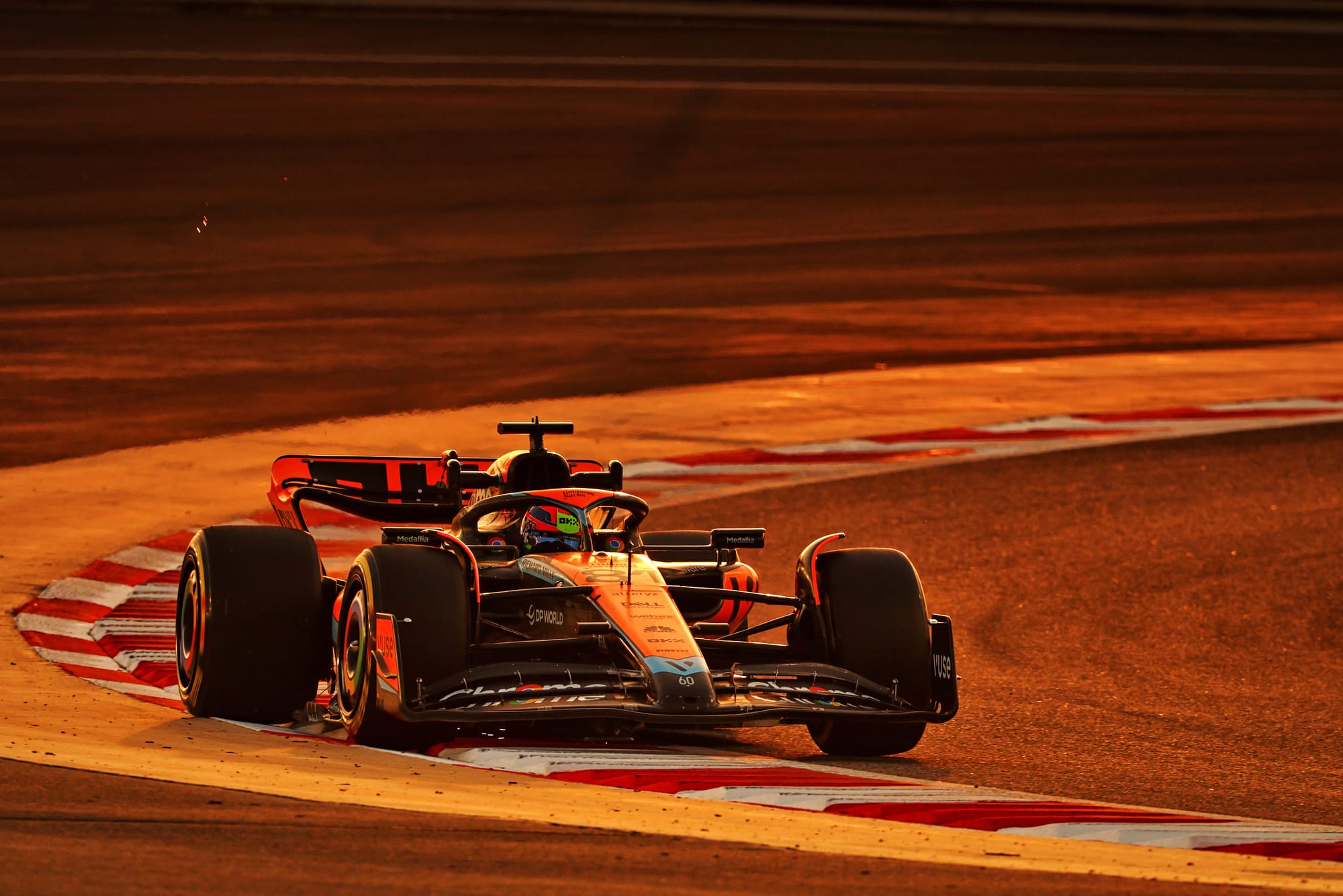
In reality, achieving this won’t be finished until the chequered flag falls at the end of the season, but the pre-season test in Bahrain is the opportunity to confirm the direction that has been set and, more importantly, if it’s the correct one.
The mechanical side of these cars is very important, but the out-and-out performance is dominated by the aerodynamics. The mechanical side must work with and enhance the aerodynamic load profile, but I will come to that later.
What makes a racing car generate driver confidence has never really changed. In my 50 years of involvement, I learned very early that if you give a driver a balanced car through a circuit’s corner-speed range, they will use their talent to drag a laptime out of it. Give them a car that is nervous or understeers and it doesn’t take long for their brains to get confused and question their ability, as Lewis Hamilton explained in his interview with Mark Hughes and select others at the end of 2023.
So what makes a car well-balanced? Well, I have put together what I would be asking my research and design team to achieve for the 2024 season. Some cars will work like this to some extent, meaning it would then be a matter of dotting the i’s and crossing the t’s to exploit it a bit further. But for most it would be a new direction for their development plan.
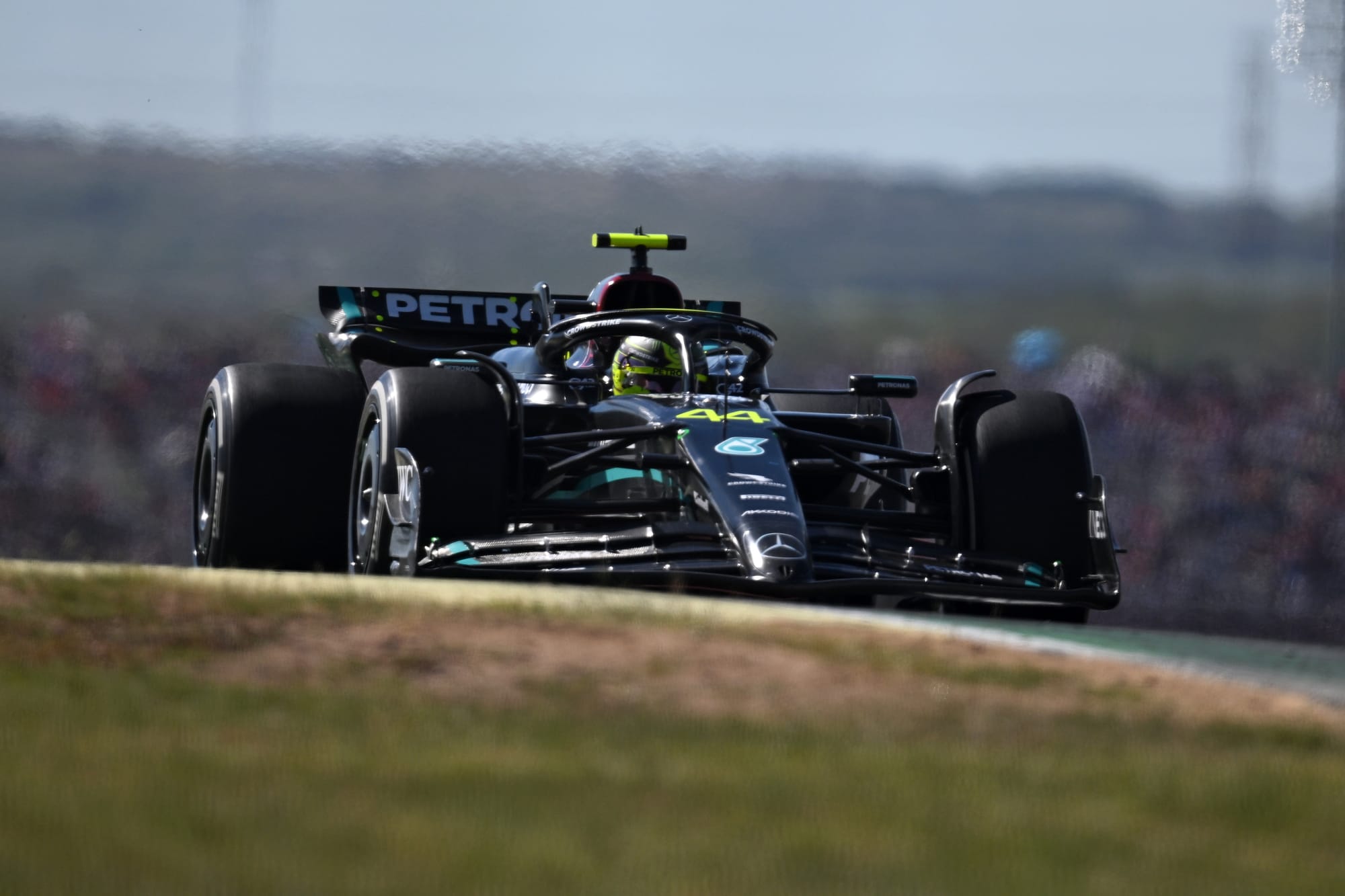
If we simply take Mercedes as an example, in 2022/23 it seemed to go from race to race with no real idea of how it was going to perform. Expectations were high, but it didn’t always pay off and the last update of 2023 in Austin was said to be a stepping stone in the direction of 2024.
In Austin, it was pretty good and Hamilton was in raptures about it, but unfortunately he was disqualified due to excessive plank wear. At the next race in Mexico, he commented that he had never driven such an inconsistent car. This just shows that the working window of what Mercedes had was just too small, and it was too difficult to achieve that working window consistently.
It’s not all just about Mercedes. Red Bull showed that in Singapore if you miss the optimum set-up for any circuit you can quickly become an also-ran. If we look closely at all the teams, we can see that inconsistency, which is basically too critical a working window.
If you have a stable tyre-load characteristic through the speed and steering-angle range, these current cars with the tyre balance they have would basically understeer in slow and medium-to-slow corners and oversteer in medium-to-fast and fast corners.
With these current regulations, introduced for 2022, the FIA has minimised the mechanical load transfer with varying steering angle. Now, you can’t do much mechanically to shift the load distribution across the front axle for slow-speed, high-steering-lock corners so your main tool is once again the aerodynamic centre of pressure shift, which in reality is actually tyre load characteristics.
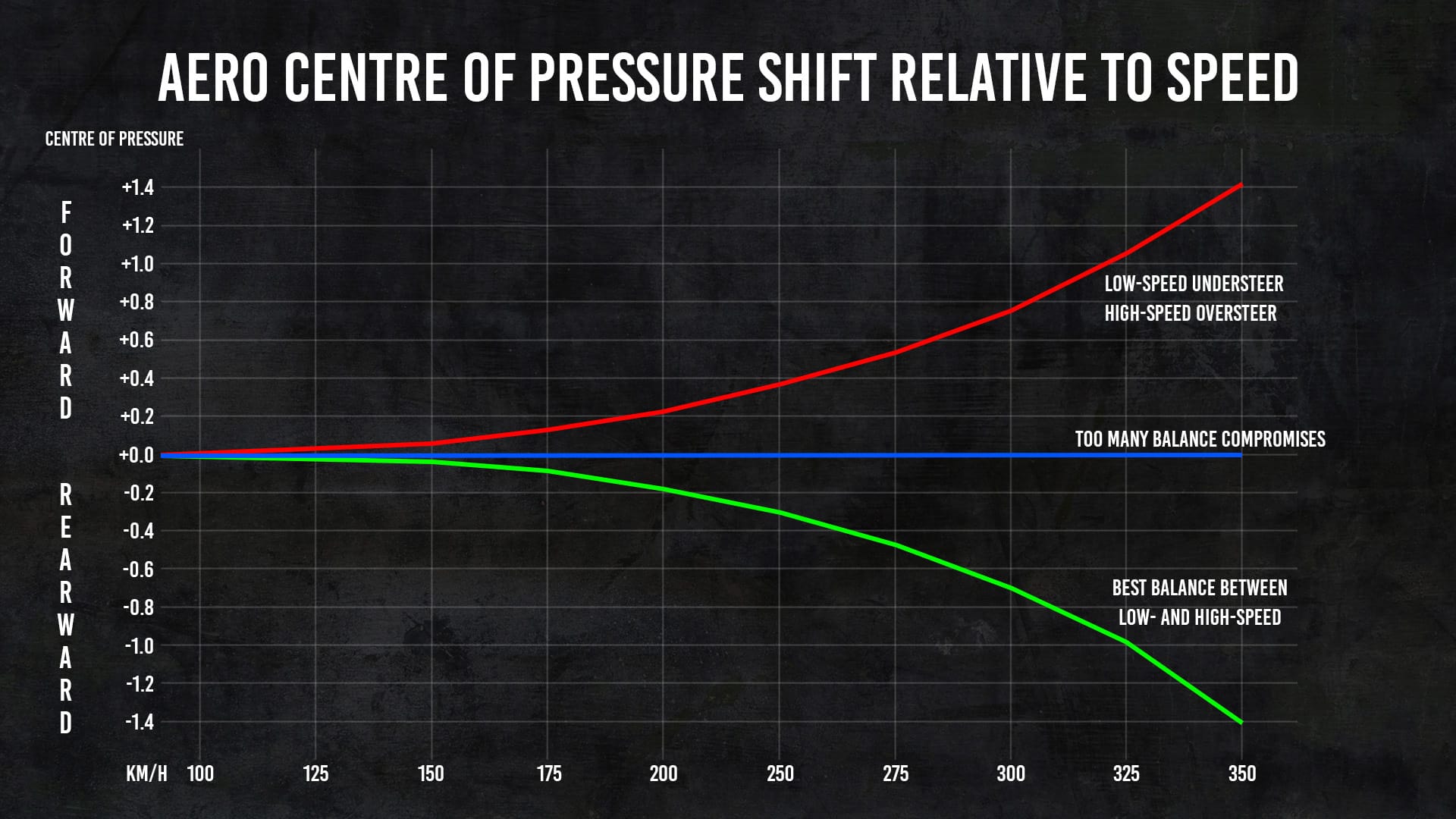
In this first graph, I have put the centre of pressure shift relative to speed. Actually, it is relative to ride height. By definition, as the car goes faster it theoretically produces aerodynamic load at the square of the speed, so twice the speed is four times the load. This means that even if you were to run the car with rigid springs, it will still get closer to the track surface because the tyres will squash. Until, that is, any airflow separation problems start to affect that body-surface airflow.
In reality, the spring stiffness and the tyre stiffness need to go hand-in-hand. So, in effect, the vertical compliance of the car will be a combination of both. If you run the car with solid springs or very high tyre pressures, you will lose grip and increase tyre degradation dramatically.
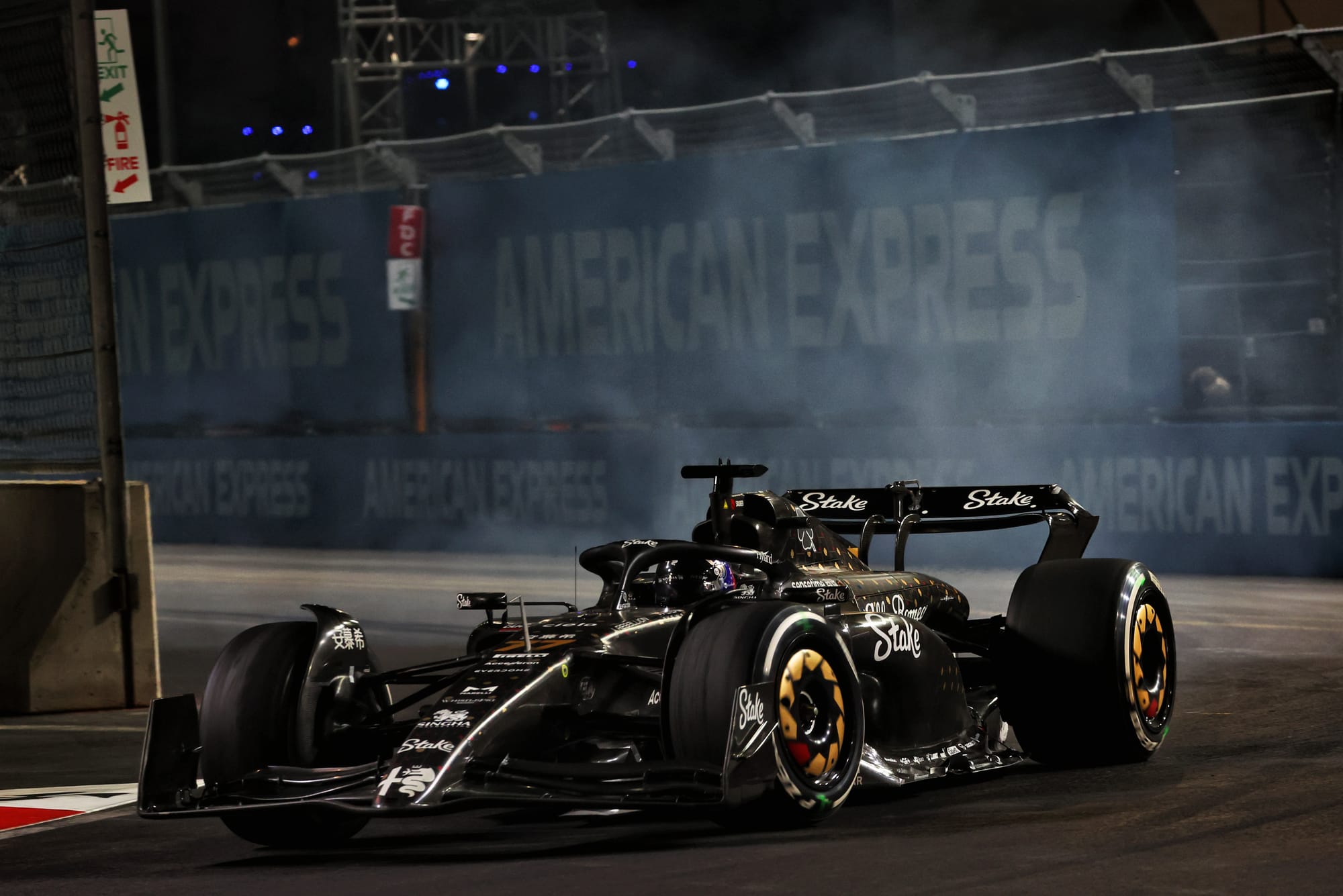
The blue line shows a stable centre of pressure with speed/reduced ride height. This would be OK, but it would be difficult to consistently balance the car for all the different corner speeds. There would be lots of balance compromises from corner to corner, and especially circuit to circuit.
The red line shows the centre of pressure moving forward with speed/reduced ride height. If you have this you will have a nervous, oversteery car and the driver will want to reduce the front wing angle to reduce that oversteer leading to lots of low-speed understeer. This will leave the driver with an inconsistent car, not one that would be on any driver’s wish list for the new season.
The green line shows the centre of pressure moving rearward with speed/reduced ride height. If you can achieve this, you will be able to run the car with a forward centre of pressure for the medium- and slow-speed corners. With the centre of pressure shifting rearward with reduced ride height, the rear of the car will be much more stable in the fast corners. You can then trim the front wing angle to optimise the balance.
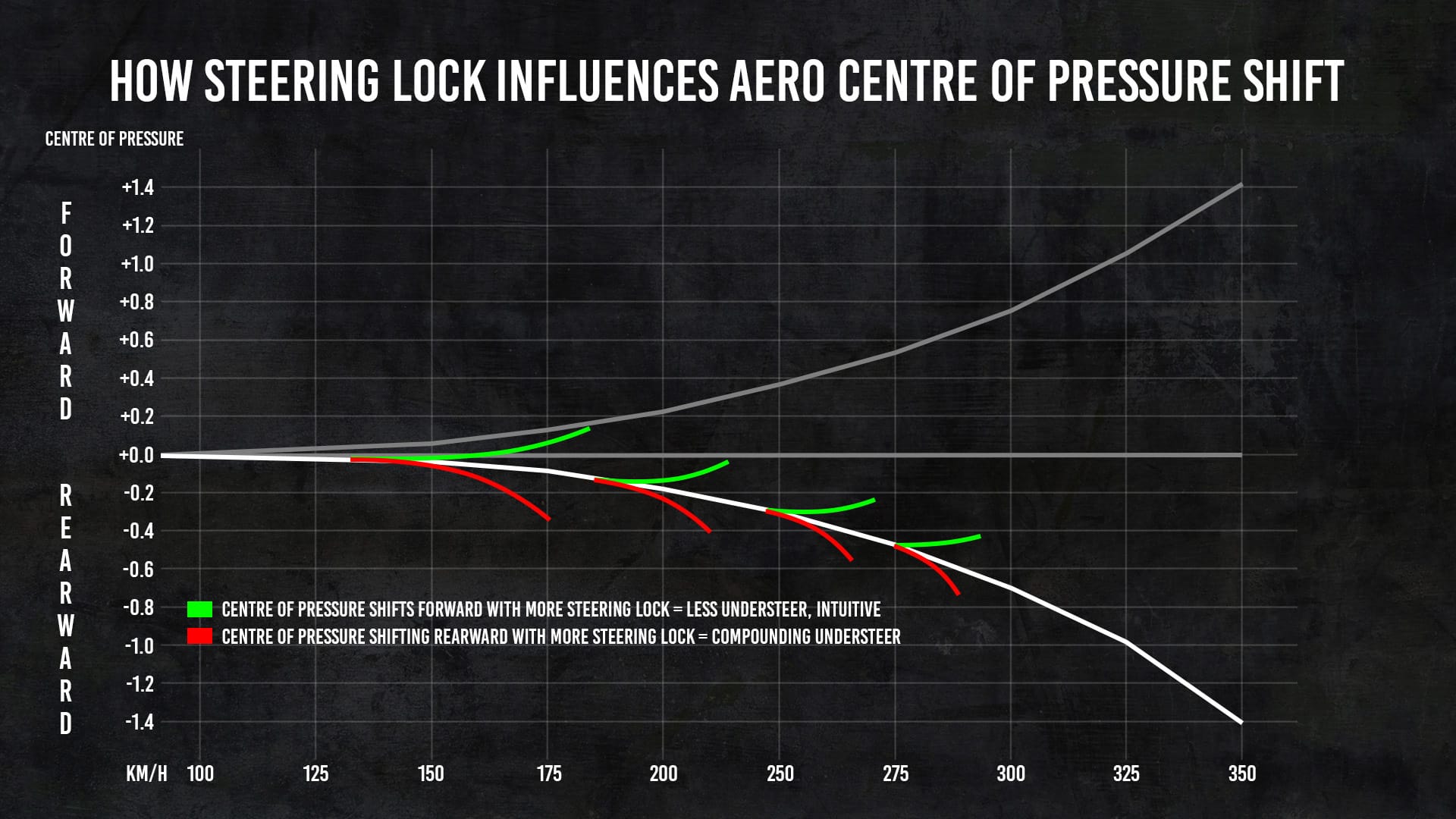
In the second graph, I have added steering lock characteristics to that main green rearward centre of pressure shift. Again, the slower the corner the greater the steering angle, so this gives you an option in the toolbox for the driver to use if necessary.
The decreasing length of the red or green lines is to define reduced steering lock as the car is travelling faster because the aerodynamic characteristics are defined by the road wheel angle. The steering-rack ratio will be about 10:1, so in a fast corner you need about a three-degree road wheel angle, for medium/fast corners about six degrees, for medium/slow corners nine degrees and slow corners 12 degrees. For the Monaco hairpin, you need much more and that’s usually facilitated by steering modifications made for that weekend only. Multiply those numbers by 10 and you have what we can see from the onboard camera as steering-wheel angle.
If you have the red line characteristic, it will confuse the driver. The tendency is that if the car is understeering, then the driver will increase the steering lock. With this characteristic the car will simply understeer more.
If you have the green line characteristic, the centre of pressure will move forward with increased steering lock so the understeer will reduce, giving the driver confidence they can cope with that understeer situation.
It is all about giving the driver confidence. No car is perfect but if the characteristics are consistent and the driver has a small balance problem they need to know they have the tools needed to fix it.
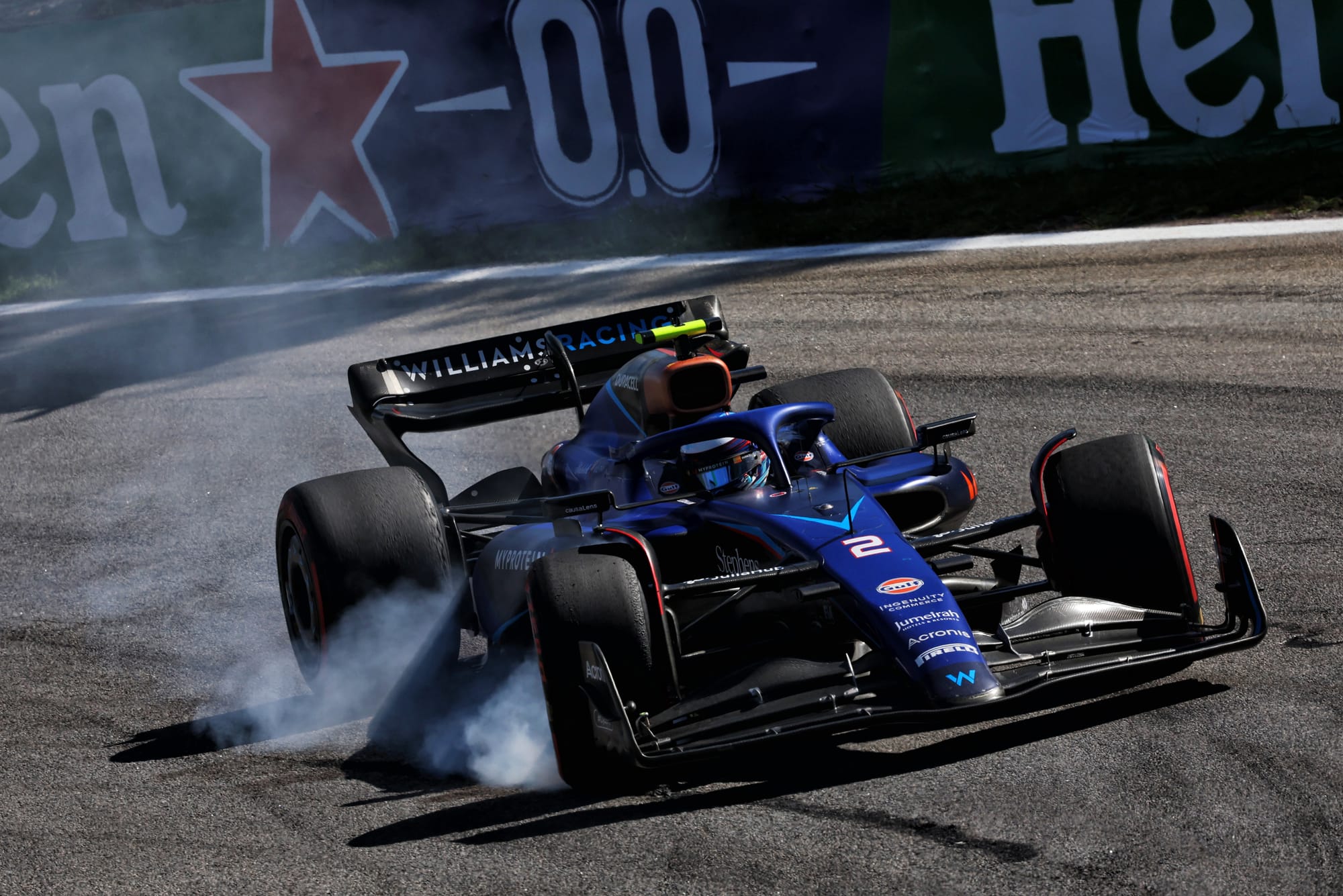
If you have achieved that aerodynamic performance profile, the main challenge is about keeping it consistent. That’s where the mechanical side of things comes into play. That driver confidence is required through the transient conditions that a car goes through over a lap of any circuit. That all starts when the driver hits the brake pedal for the first corner, meaning braking stability is the first requirement.
Then, it is down to how much confidence they have with their steering input. If they have to be on fingertips just waiting to feel the balance, then it means that you are not aggressive enough and end up turning in a bit early which will then probably generate understeer. After that, the driver will use their talent to optimise the exit but that entry phase is critical to corner speed and in turn laptime.
That is really where the suspension characteristics come into play. Red Bull has more anti-dive on the front suspension and anti-lift on the rear suspension than any other team, so its main effort went into generating an aerodynamic profile that gave it aerodynamic stability and a suspension system that controlled it as best possible. One without the other would have just meant more compromises from circuit to circuit.
I am by no means saying it’s easy, but Red Bull set the template in 2022 and 2023 so now it’s down to the other teams to pick it up and run with it. I’m not saying copy the Red Bull’s visual concept as there is a lot more to it that we don’t see, but it might just be a good place to start from - especially with the budget cap putting a dampener on major in-season developments.
When you are talking about the car concept, it’s important to remember that it’s not about what the car looks like but how it behaves across the vast range of transient conditions. Deciding on what characteristics you want is one challenge and the other is delivering them, which is what makes this so difficult.


